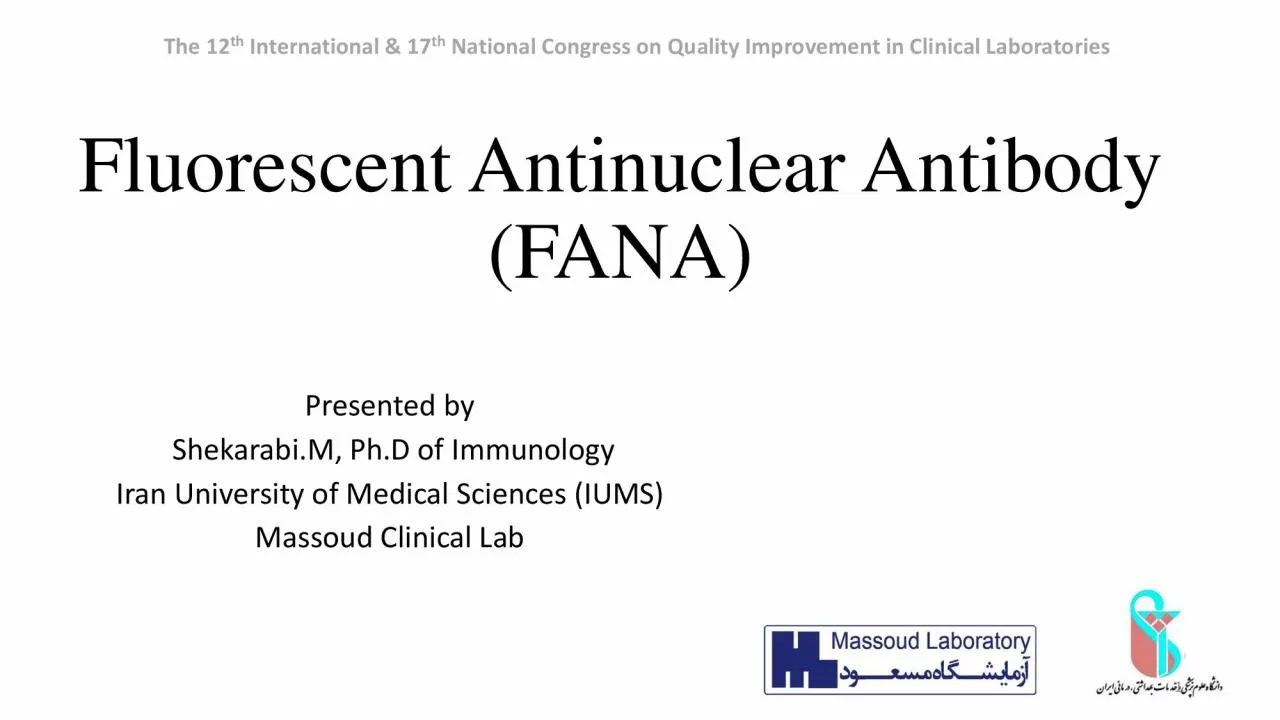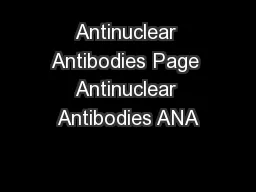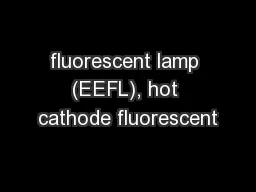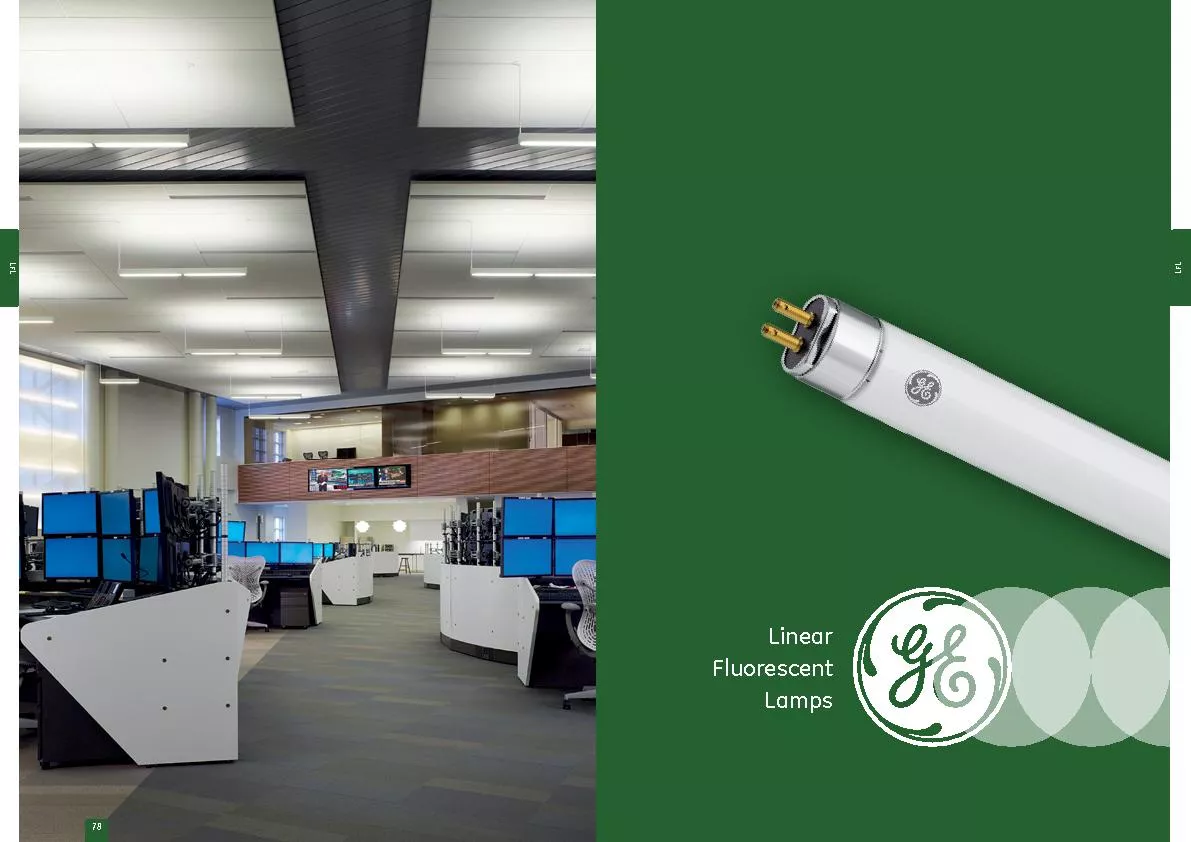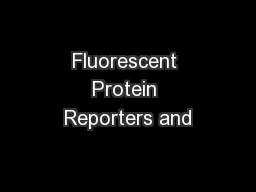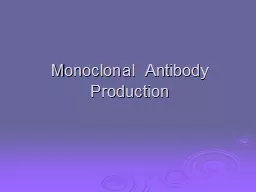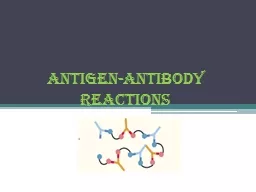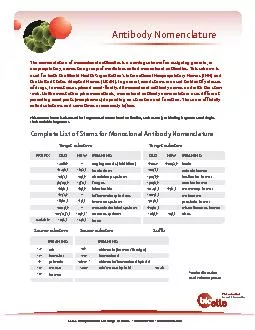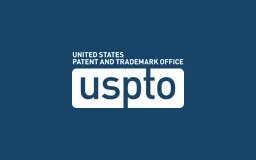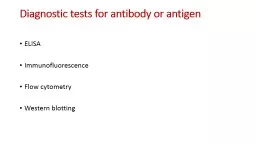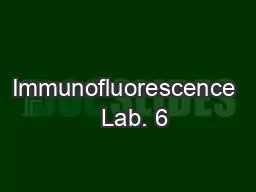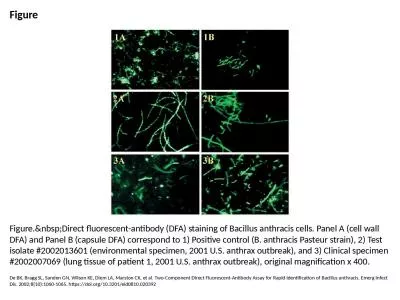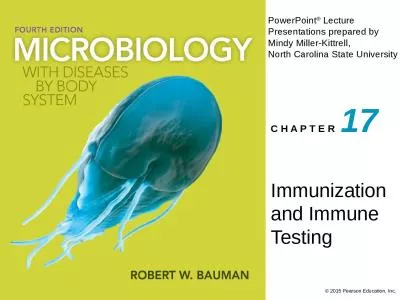PDF-Fluorescent Antinuclear Antibody
Author : angelina | Published Date : 2021-09-10
FANAPresented byShekarabiM PhD of ImmunologyIran University of Medical Sciences IUMSMassoud Clinical LabThe 12thInternational 17thNational Congress on Quality Improvement
Presentation Embed Code
Download Presentation
Download Presentation The PPT/PDF document "Fluorescent Antinuclear Antibody" is the property of its rightful owner. Permission is granted to download and print the materials on this website for personal, non-commercial use only, and to display it on your personal computer provided you do not modify the materials and that you retain all copyright notices contained in the materials. By downloading content from our website, you accept the terms of this agreement.
Fluorescent Antinuclear Antibody: Transcript
Download Rules Of Document
"Fluorescent Antinuclear Antibody"The content belongs to its owner. You may download and print it for personal use, without modification, and keep all copyright notices. By downloading, you agree to these terms.
Related Documents

